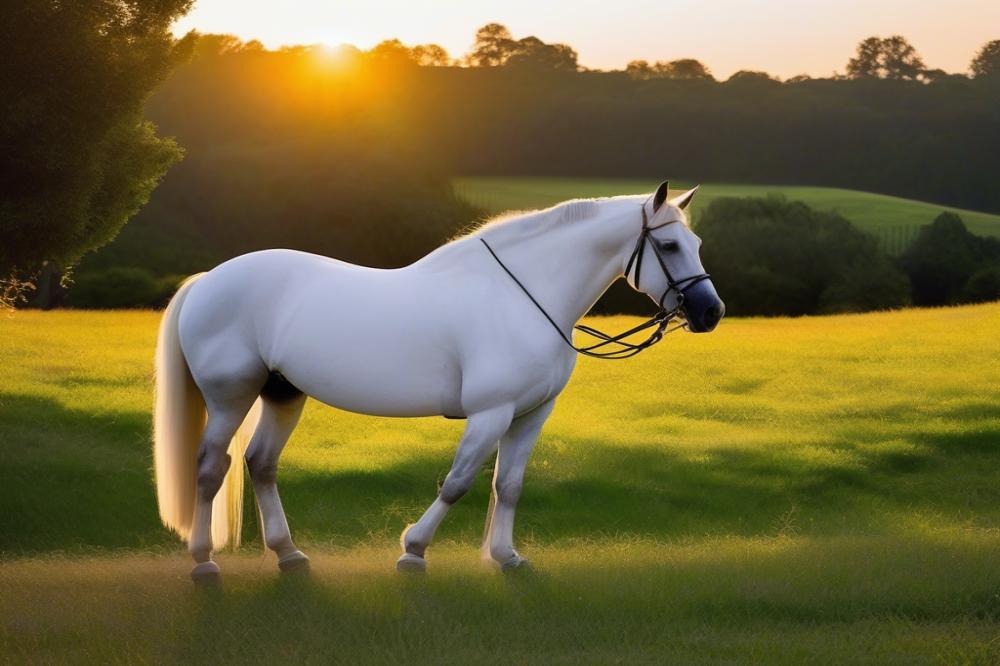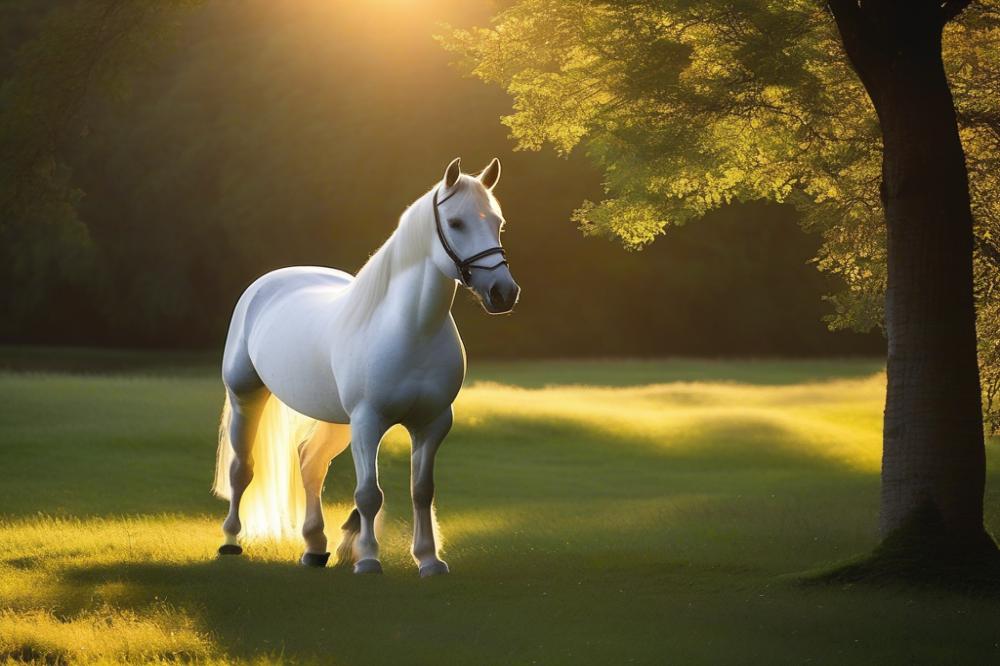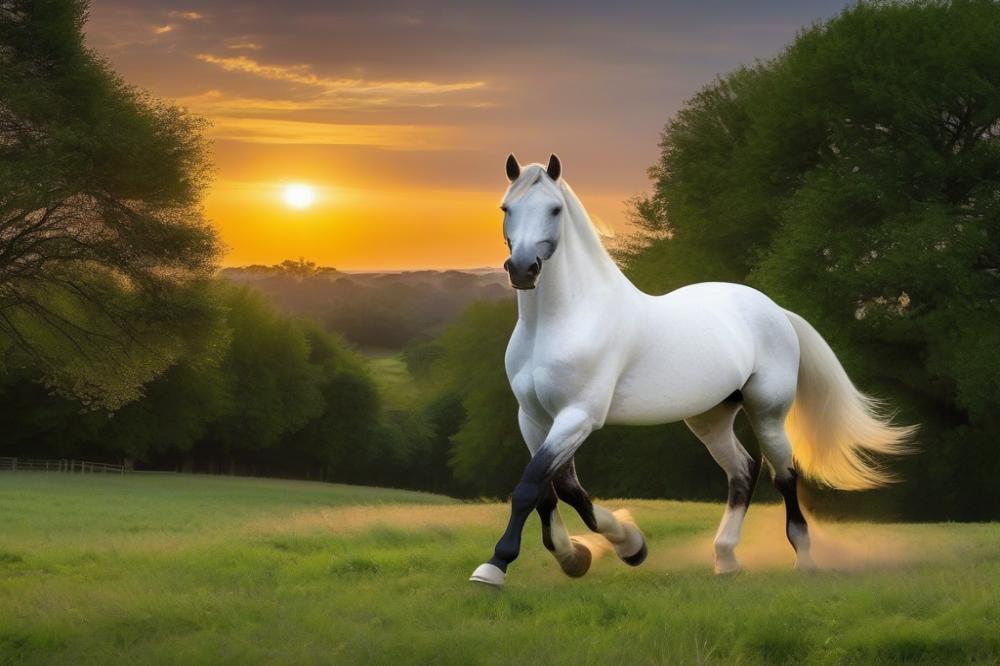Understanding Lipizzaner horses and Trust in Riding
Lipizzaner horses possess a fascinating history that traces back to the 16th century. Known for their grace and intelligence, they are one of the oldest horse breeds in Europe. Their signature white coats and powerful builds make them stand out among other breeds. With their elegant movements, these horses are often associated with classical dressage.
Building trust while riding is an essential aspect of connecting with any horse. When a rider establishes a solid bond, the horse feels secure. This dynamic also enhances the rider’s confidence, resulting in a more enjoyable experience for both. Without a good relationship, problems may arise such as reluctance to perform movements or anxious behavior.
Several effective techniques can strengthen the bond with a Lipizzaner horse. Groundwork exercises can help in building understanding before even getting into the saddle. Approaching with patience and calmness creates a positive environment for learning. Consistency in training and clear communication are also crucial. With dedication and effort, riders can foster a lasting relationship where trust can truly flourish.
Understanding Lipizzaner Horses

Lipizzaner horses are known for their grace and intelligence. These animals often display a strong bond with their riders. Traits like calmness and loyalty make them unique among equine breeds. Acknowledging their behaviors can help riders connect better.
equine communication is key when working with any horse. Lipizzaners respond well to subtle cues. This means a rider’s body language plays a huge role. Understanding these signals fosters a deeper relationship. Horses communicate mainly through posture and movement. Thus, a rider should always observe these signs closely.
Behavior affects how trust grows between a horse and rider. When a horse feels safe, it will be more open. This openness is crucial for bonding. Moreover, patience is essential during this process. Horses can sense a rider’s emotions, so staying calm matters. Recognizing stress in your horse also helps build confidence.
Many new riders underestimate the importance of this understanding. Every interaction counts when developing rapport. By being aware of a Lipizzaner’s unique needs, the rider builds a positive environment. Such an environment increases the horse’s trust level. Effective communication leads to smoother rides and happier moments together. Emphasizing mutual understanding lays the groundwork for a lasting partnership.
Building a Strong Bond

Grooming serves as a vital way to connect with a Lipizzaner horse. Brushing their coat not only removes dirt and dust but also creates a moment for quiet interaction. This routine can help the horse feel safe and cared for. Soft strokes can ease tension and build a sense of comfort between rider and steed. Using gentle voices while grooming further strengthens this connection.
Bonding exercises can enhance the relationship. Simple activities like walking together or engaging in playful movements will foster trust. Horses respond well to consistent behaviors, so always aim for calmness. You might try leading the horse through obstacles. This type of challenge encourages communication and cooperation.
Spending quality time enhances riding skills naturally. The more time riders dedicate to their horses, the more they understand their needs. Familiarity creates a mutual respect that pays off during rides. Riders will find it easier to predict the horse’s reactions, leading to more fluid movements. The bond formed through shared experiences translates into better performance in the saddle.
Consider varying your routine. Sometimes, just sitting quietly near the horse can be beneficial. Observing their behavior during these moments will lead to insights about their personality. Each horse is different, and this individuality shapes how they respond to different situations. Pay attention to what they enjoy and respect their boundaries.
Riding becomes more enjoyable when a connection exists. Trust naturally grows through positive reinforcement. Rewarding good behavior with a treat or a gentle word can make a big difference. Over time, these small gestures build a resilient bond that enhances your overall experience.
Effective riding techniques

Riding a Lipizzaner horse requires a blend of skill and communication. Techniques that inspire confidence play a crucial role in the experience for both horse and rider. From the moment you mount, body language becomes a vital part of the connection.
Riders must remember that subtle cues can convey comfort or tension. Maintaining a relaxed posture translates to a more relaxed horse. Tension in your body can create unease. When you sit properly, the horse can feel secure and responsive. Strive for a fluid motion when you ride.
Establishing soft hands is essential for effective communication. Hands should be gentle on the reins, allowing the horse to feel your intentions rather than pressure. When your hands are light, the horse can move freely without confusion. Pressure should only be applied when necessary and should always be followed by a release.
Balanced cues also play a significant role. Use your legs and seat in harmony with your hands. Applying a cue through your legs must match your upper body movements. This creates clarity for the horse. Be aware of your breathing; a steady breath helps create a calm environment.
As you work together, watch for the horse’s reactions. Small shifts in their posture or ears can signal how they feel about your signals. It’s important to be attuned to these changes. Recognizing them allows for adjustments in your approach. Your goal should be a partnership, where both you and your horse can respond to each other.
Trust between the horse and rider doesn’t happen overnight. It develops slowly through consistent and clear communication. The more time you spend together, the better your understanding of each other’s needs. Keep it patient. Remember that every ride is a step towards building that special bond.
Training for Trust
Building trust with a Lipizzaner horse requires a thoughtful approach. These majestic animals possess a sensitivity that can be both a challenge and a gift. Understanding the basics of horse training is key to developing a bond with them. Consistency and patience form the backbone of any effective training program.
Positive reinforcement is a cornerstone of trust development. Rewarding your horse for desired behaviors encourages them to repeat those actions. Simple methods like using treats or verbal praise can create a positive atmosphere. It’s important to recognize minor successes. Each small step forward contributes to the overall relationship.
Workshops focused on trust-building techniques can offer valuable insights. Expert trainers often share methodologies that cater specifically to Lipizzaner horses. These sessions allow horse owners to learn about body language and effective communication. Engaging with fellow equestrians can foster a sense of community, where everyone learns together.
Establishing a reliable routine is crucial when training. Horses thrive on structure; knowing what to expect reduces anxiety. Spend time grooming and handling your Lipizzaner outside of riding. This groundwork helps create a safe space where trust can flourish.
Incorporating various exercises can promote understanding. Groundwork is particularly useful. It helps the horse become familiar with cues and movements without the pressure of riding. During these sessions, focus on maintaining a calm demeanor. Horses are adept at picking up on emotions, so your energy plays a role in their response.
Remember to celebrate progress along the way. Each interaction with your Lipizzaner is an opportunity to nurture this bond. Whether you’re practicing simple commands or enjoying a leisurely stroll, every moment counts. Keeping sessions short and enjoyable can prevent burnout for both you and your horse.
The journey of trust-building is ongoing. Reflection on each training session can highlight areas for improvement. Adjusting techniques based on the horse’s reaction is vital. This adaptability promotes a lasting relationship rooted in respect and understanding.
Observing Body Language
Understanding a horse’s body language can be essential for gauging its mood and comfort. Each Lipizzaner horse communicates feelings through its posture, ears, and movements. Observing these subtle cues can help you determine whether your horse is relaxed or anxious.
The position of the ears is particularly telling. If the ears are perked forward, your horse is likely alert and engaged. Flattened ears, on the other hand, suggest irritation or discomfort. Be aware of your horse’s eyes as well. A horse that is calm often has soft eyes, while a horse that feels threatened may display wide, frantic eyes.
Responses to your horse’s signals should be thoughtful. If you notice signs of stress, such as pawing or rapid tail swishing, it may indicate that your horse needs a break. Speaking softly or offering a treat can help soothe an uneasy animal. Calmly redirecting their attention can also create a more comfortable environment.
Recognizing when your horse is happy is equally important. A relaxed stance and soft muzzle often indicate that your Lipizzaner enjoys your company. Spending time grooming them can reinforce positive feelings and strengthen your bond.
Practicing the skill of reading equine expressions takes time. Spend extra moments with your horse, observing how he reacts in various situations. Watching their interactions with other horses can provide insight into common behaviors. Each session offers a new opportunity to learn.
Consider keeping a diary of your experiences. Documenting your observations will help you refine your understanding. Over time, you will begin to notice patterns that may not be apparent at first glance.
Trust is a two-way street. By actively observing your horse’s body language, you demonstrate that you respect its feelings. This mutual understanding can lead to a deeper connection. Keep an open mind, and be patient. Building this awareness can enhance your overall experience when riding.
Building a Strong Bond for Success
In summary, several key strategies can help you foster a trusting relationship with a Lipizzaner horse. Start with groundwork. Spend time getting to know your horse on the ground before riding. This step is critical for establishing a connection. Understanding equine communication will make this process smoother. You’ll learn to read the horse’s body language, which is vital in building rapport.
Next, practice consistent routines. Horses thrive on routine. By sticking to a regular schedule, you will help your Lipizzaner feel secure. Use positive reinforcement during your horse training sessions. Rewarding good behavior encourages your horse to respond positively to your cues.
Engagement during riding is also essential. Pay attention to the horse’s movements and responses. Developing awareness of their feelings can enhance your partnership. Trust takes time, so be patient while you work together. Regular practice of these techniques will deepen your connection over time.
This supportive bond can lead to incredible experiences in riding. You’ll notice improved cooperation and performance, making the journey much more enjoyable. Remember, success is built on trust. Your relationship with a Lipizzaner horse can flourish when you focus on these elements. Embrace the journey ahead!



